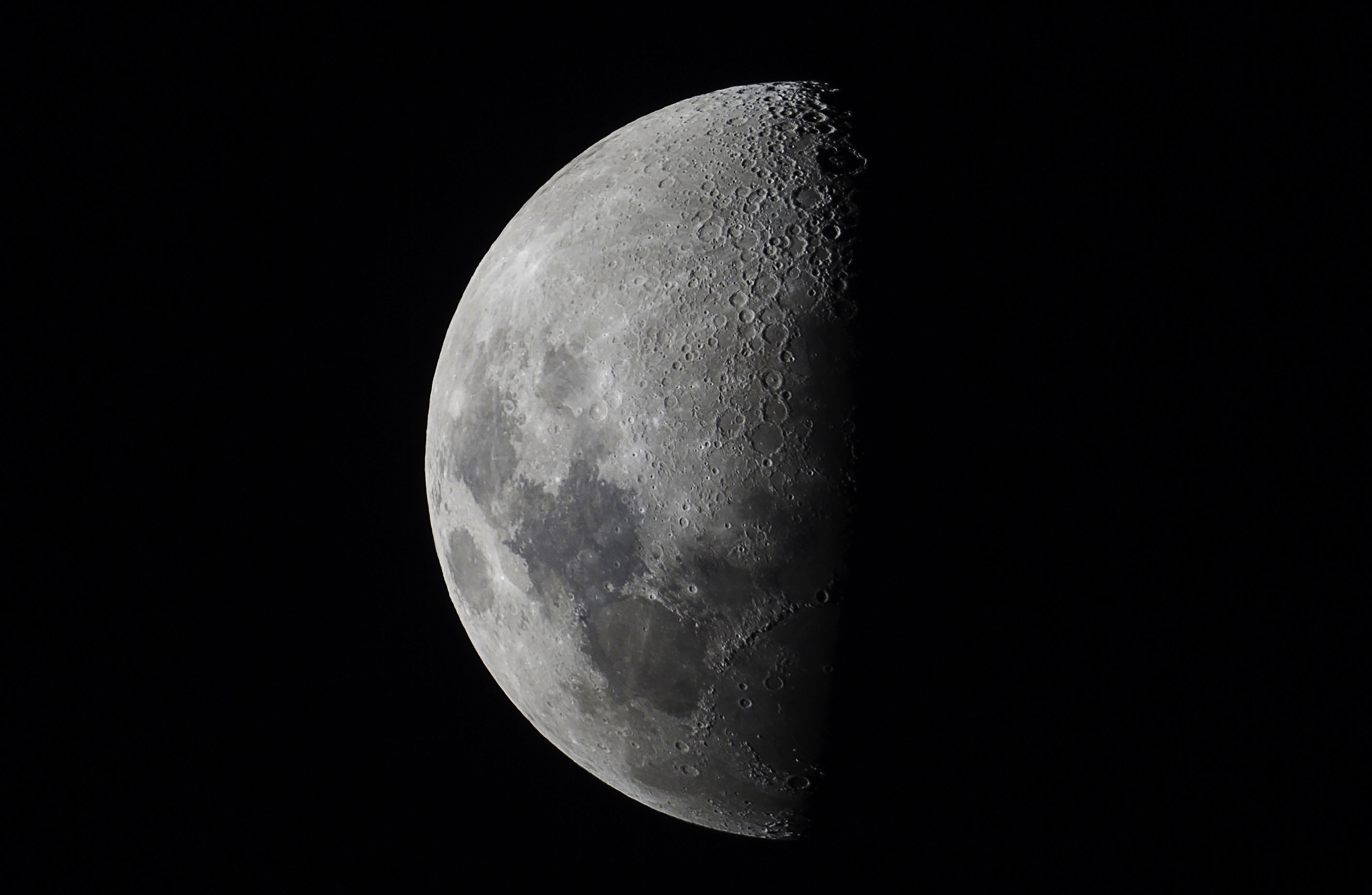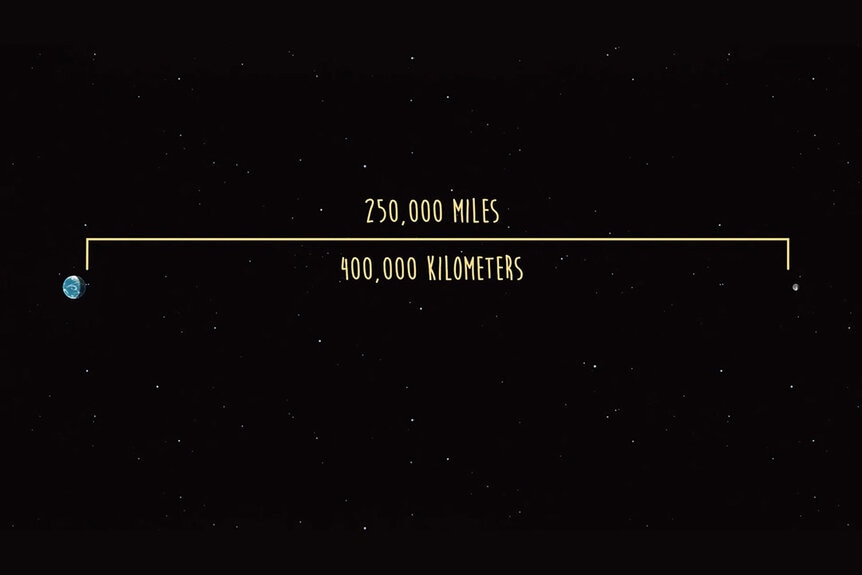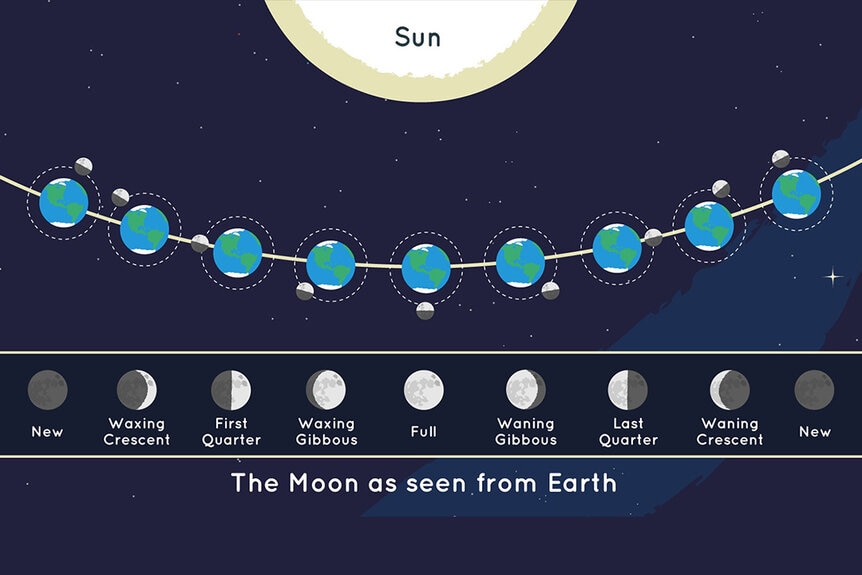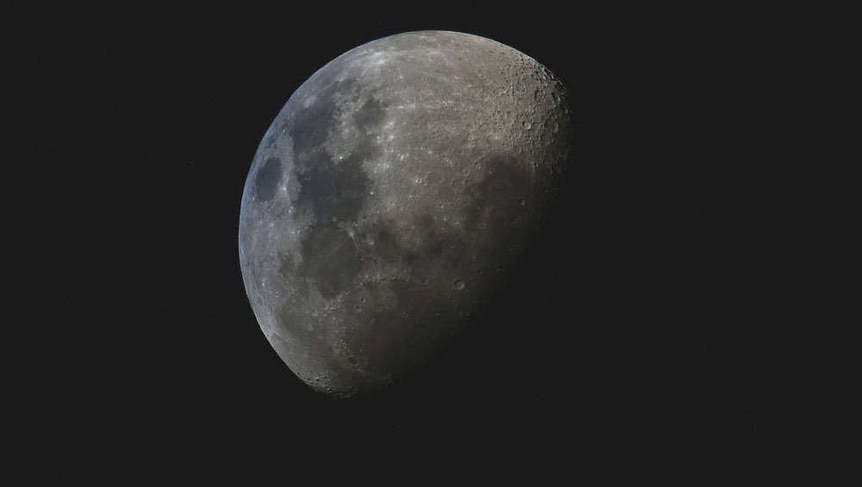Create a free profile to get unlimited access to exclusive videos, sweepstakes, and more!
What Are the Moon Phases and How Do They Work?
Whether it's a phase or not is a matter of cosmic perspective.

The phrase “dark side of the Moon” has so effectively ingrained itself in the collective consciousness that it regularly gets used as a title for creative works. It’s famously the title of Pink Floyd’s 1973 album, but it also refers to a video game, several songs, novels, television shows, and movies. The 1990 sci-fi horror flick The Dark Side of the Moon takes place aboard an orbital maintenance ship and a misplaced NASA Space Shuttle.
When the ship malfunctions in cislunar space and the crew gets pulled toward the Moon’s dark side, they encounter a malevolent supernatural force waiting for them in the abyss. The Moon is ever present and mysterious, its dark side doubly so. It’s in the sky overhead all the time, but we so often take it for granted, go days or weeks without thinking about or noticing it, and might not even notice if something changed on its face. With that in mind, here’s your guide to the faces and phases of the Moon, so you’ll know when something is normal variation and when it might be a sign of the end times.
For More on the Moon:
NASA Proposes Moon Standard Time with Slightly Shorter Seconds
Odysseus Lunar Lander Returns U.S. to the Moon for the First Time in More Than 50 Years
The Moon Is Shrinking, Triggering Fault Lines and Moonquakes
How the Moon Moves Around the Earth
To really wrap our heads around why the Moon has phases and how they work, we need to build a picture of the Earth-Moon system. The Moon is a great gray globe hovering in the sky and it looks pretty close by, like you could get there in an afternoon if you could only get off planet. But it’s farther away than it looks.
The average distance from the Earth to the Moon is just shy of a quarter million miles. That’s large enough to fit every other planet in the solar system, gas giants included, between the Earth and Moon with room to spare. At that distance, the Moon orbits lazily, roughly every 28 days, and is tidally locked so that one side (mostly, there is a little bit of wobble, so we see a bit more of one side or the other at any given time) always faces the Earth.
From here it feels as though the Moon doesn’t rotate at all, but that’s an illusion. Instead, the Moon’s rotation around its own axis is synchronized with its orbit around the Sun. From a certain perspective, its year (orbit) and day (rotation) have equal length. If you could watch the Moon go through an orbit from a point in space above the Earth and Moon, you would see that it spins exactly once for every circle it makes around the planet.
While we don’t directly see the rotation of the Moon from our viewpoint on Earth, we can see the consequences of that slow rotation in the lunar phases.
Why the Moon Has Phases and How They Work
At any given time, half of the Earth is illuminated by the Sun while the other side faces deep space. As the planet spins, sunlight slowly shifts east to west pushing sunrise ahead of it and dragging the sunset behind. The same thing happens on the Moon, just a bit slower.
When you look up and notice that the Moon has transitioned from a waxing crescent to a quarter Moon or from full to a waning gibbous (more on those terms in a second), what you’re seeing is the lunar day unrolling in slow motion. When the Sun is directly overhead, a sort of lunar high noon, we see a full Moon on Earth. That’s also the only time a lunar eclipse is possible, when the Earth has a chance of slipping in front of the Sun. At lunar midnight, when the Sun is on the other side of the Moon from our POV, we get a new Moon and solar eclipses are possible. At the time of writing, the next new Moon will occur on April 8, coinciding with a total solar eclipse visible from parts of North America.
The phases of the Moon are an artifact of our unique position relative to the Moon. They happen because we are stuck watching the Sun rise and set on just one side.
What Moon Phase Are We in Now?
The answer will depend on when you’re reading this, but the phases always happen in the same order and at a consistent rate. Here’s how you can tell what Moon phase we’re in just by looking up.
New Moon
During the new Moon, the Sun and Moon are on the same side of the Earth. They rise and set together and the Moon is visible, though faint, in the daytime sky. The Moon is most difficult to see during this period because all of the sunlight is striking the far side.
Waxing Crescent
As the Moon continues along its orbit, it rotates just enough that sunlight creeps around from its right side. Just the edge of the Moon will be illuminated, highlighting craters along the terminator (boundary between day and night). The Moon will begin to rise a little later in the day and stay up a little longer at night.
First Quarter
The naming convention can be a little confusing because, from our POV, half of the visible Moon is illuminated. That said, we can only see half of the Moon and half of it is lit up, so perhaps "quarter" is accurate, even if it feels wrong. At the quarter Moon, the right side of the Moon will be lit up with an almost perfectly straight line running down the middle.
Waxing Gibbous
What's a “gibbous” you ask? That’s a great question; it’s fancy talk for bulging, protruding, or convex. In simple terms, it means the illuminated portion of the Moon is more than half. From here, it’s a mad dash toward full lunar illuminative power!
Full Moon
The opposite of a new Moon, these happen when the Moon is on the opposite side of the Earth as the Sun. This is the equivalent of standing in front of a car and lighting something up with headlights. We get the full benefit of direct illumination.
Waning Gibbous
After the full Moon, the universe turns the lunar dimmer switches back down. The sunrise has moved back around to the far side of the Moon and sunset is following. That’s when you’ll notice the first hints of shadow along the edge. It’s still gibbous because it’s more than half lit up, but it’s waning because the amount of light is shrinking. By contrast, waxing is anytime the amount of light is increasing day over day.
Last Quarter/Third Quarter
Similar to the first quarter Moon, but the opposite side.
Waning Crescent
As the last of the sunlight slips over the edge of the Moon, we’ll be left with a small sliver of light holding back the darkness. Soon, all of the Sun’s light will be on the far side.
New Moon
Darkness falls, and the cycle continues. During the new Moon there really is a dark side of the Moon and we’re looking at it.
Discover deep space horror on The Dark Side of the Moon, streaming now on Peacock.





























